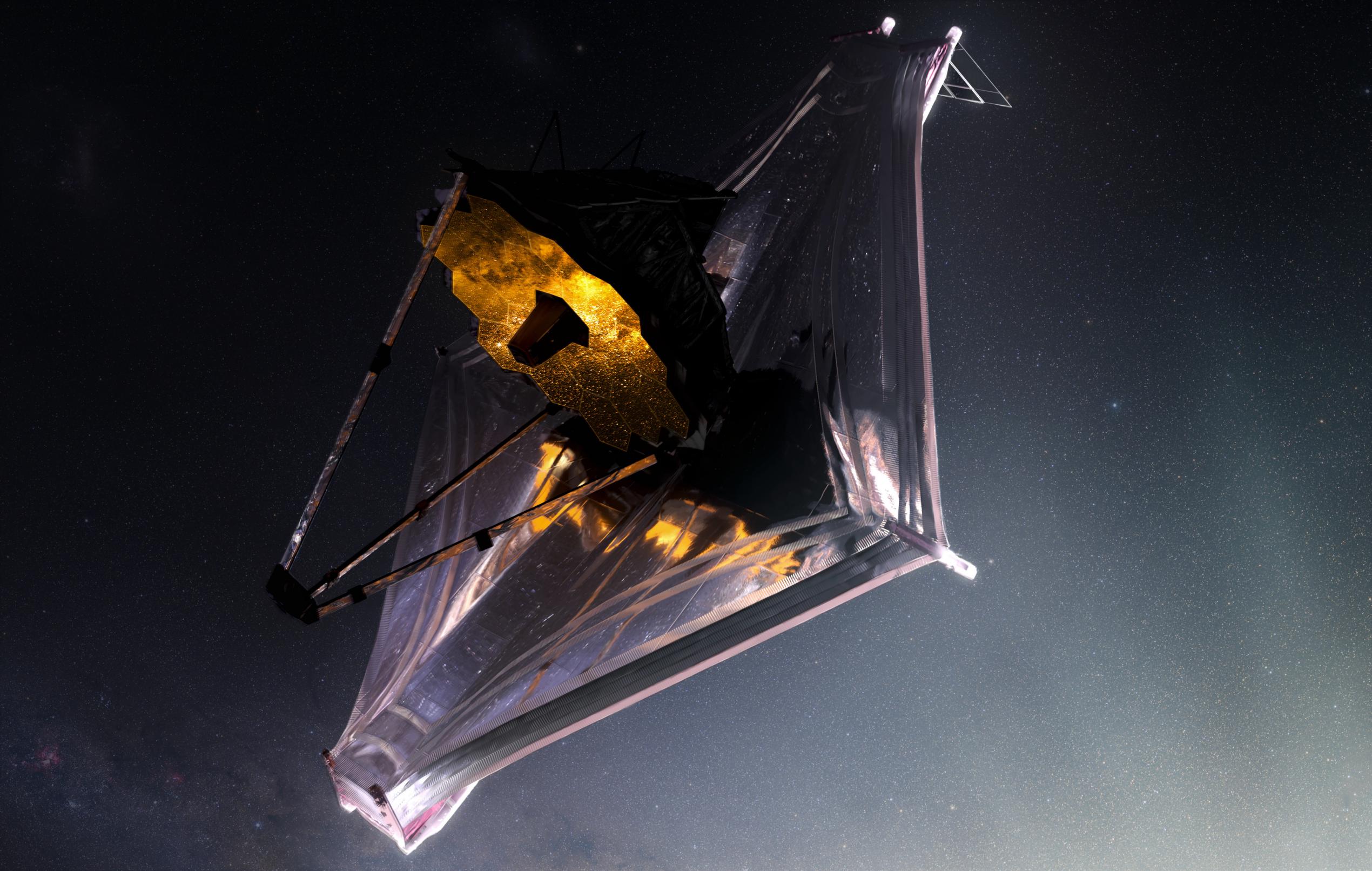
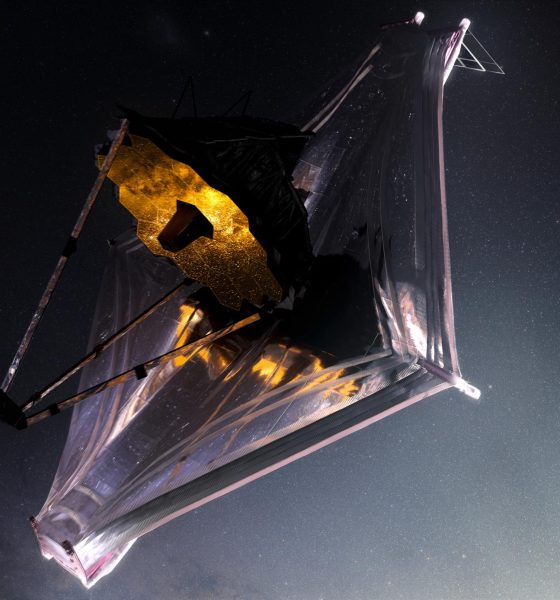
News
NASA’s Webb Telescope mirror crushes “most optimistic predictions” after final alignment
NASA says that the nascent James Webb Space Telescope’s (JWST) “optical performance…continues to be better than the…most optimistic predictions” after completing the alignment of its record-breaking mirror.
Between 7 and 14 years behind schedule and over budget by a factor of 2 to 10, an Arianespace Ariane 5 rocket sent the Webb Telescope on its way to deep space on December 25th, 2021. Weighing 6.2 tons (~13,600 lb), JWST was almost half as heavy at liftoff as NASA’s iconic Hubble Space Telescope despite packing an unprecedented origami-like mirror with more than six times Hubble’s total collecting area. The combination of extreme mass reduction and extraordinary complexity required to launch such a large mirror so far from Earth with a rocket like Ariane 5 helps to partially explain why the Webb Telescope took so long (~18 years) and cost so much (~$9.7 billion) to design, develop, and build.
Nonetheless, launch it finally did. Ariane 5 did most of the work, sending the telescope on a trajectory that – with some help from its onboard thrusters – would guide it to the Sun-Earth L2 Lagrange point located some 1.5 million kilometers (~950,000 miles) from Earth. In perhaps the largest relief in the history of space-based observatories, the Webb Telescope’s immensely complex deployment process was then completed without a single major issue. 30 days after liftoff, the telescope – fully deployed – reached its operational orbit.
For the past four months, in comparison, almost all JWST work has focused on the less visible and far smaller processes of alignment and calibration. Each of JWST’s 18 main mirror segments has slowly but surely inched micrometer by micrometer into position while large swaths of the telescope slowly cooled to ambient temperatures – essential for maximum performance. Simultaneously, all of Webb’s primary instruments have achieved first light and entered the early phases of calibration and commissioning. Only after the instruments are painstakingly calibrated, the mirror is perfectly aligned, and crucial hardware is chilled to temperatures as low as -449°F (-267°C) can Webb begin to observe the universe and revolutionize large subsets of space science.
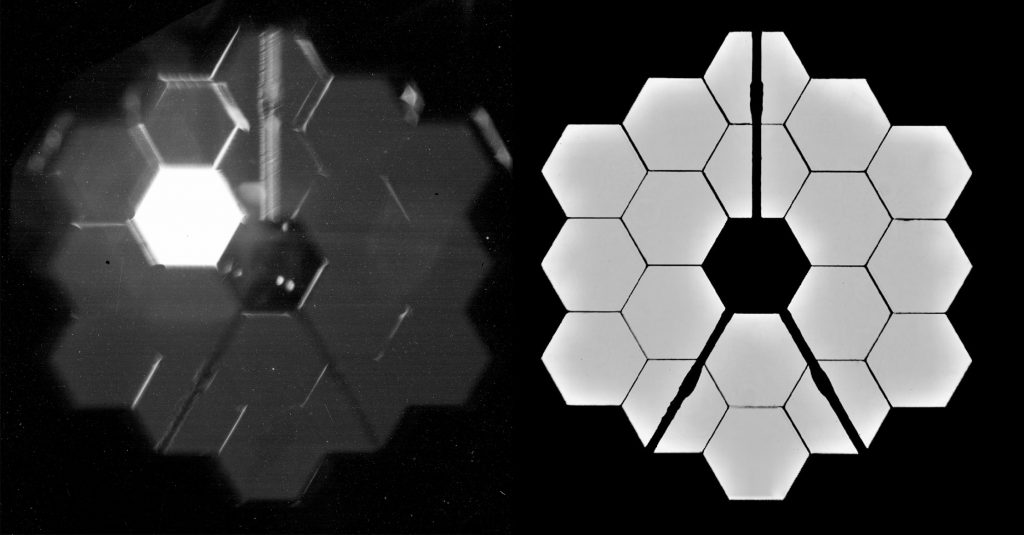
The first and most important step – mirror alignment – is now complete. The alignment process began in February 2022, six weeks after liftoff. First, images were captured with the unaligned mirror to help determine exactly what condition it was in. One by one, each of Webb’s 18 mirror segments were individually moved to determine which image each mirror was responsible for, which then allowed ground controllers to properly focus each mirror’s view of a target star. In a process known as “coarse phasing,” once those 18 points of light well-resolved and linked to a specific mirror segment, the segments were gradually steered on top of each other to produce a single image.
“Coarse” heavily undersells the almost unfathomable precision required to complete the step. To reach its full potential, each of the Webb Telescope’s mirror segments must be aligned to within 50 nanometers of each other. According to NASA, “if the Webb primary mirror were the size of the United States, each segment would be the size of Texas, and the team would need to line the height of those Texas-sized segments up with each other to an accuracy of about 1.5 inches.”
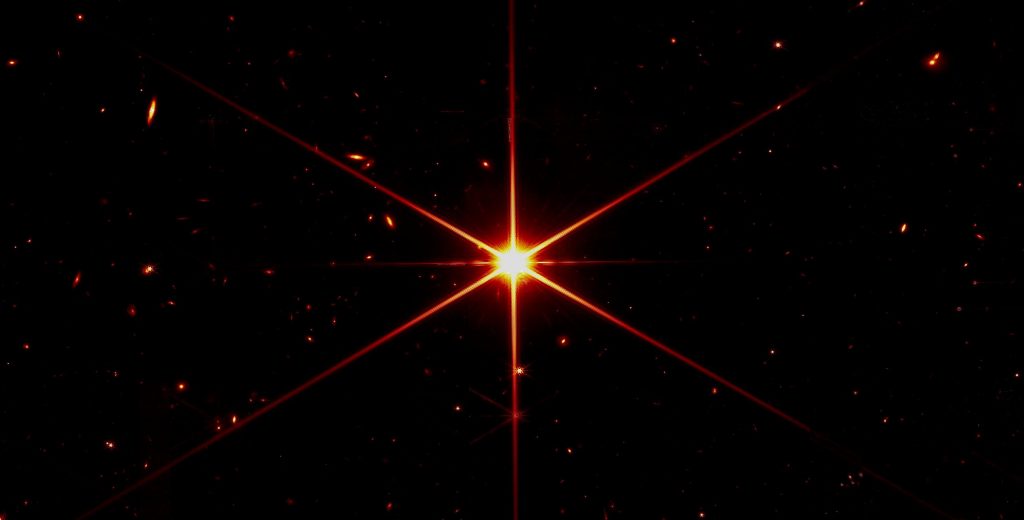
Fine phasing followed, involving an even more esoteric set of processes designed to focus the mirror as perfectly as possible. The resulting image was then tweaked to properly align it over the field of view of each of the Webb Telescope’s four main scientific instruments. Finally, some steps of the seven-step alignment process were redone or refined to fully optimize the mirror to the liking of its Earthbound creators and prospective users.
Ultimately, Webb Telescope alignment was extraordinarily successful, producing an image sharper and cleaner than even the “most optimistic predictions” made by its engineers. NASA says that the image is so detailed that it has effectively reached the physical resolution limit for a mirror the size of the Webb Telescope’s, meaning that it would have to violate the known laws of physics to resolve any more detail.
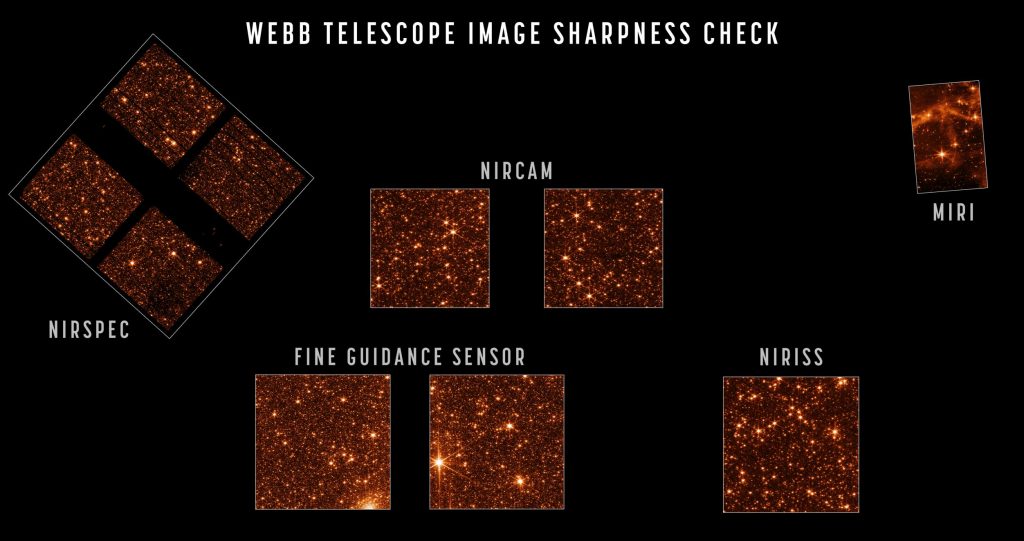
With mirror alignment complete, JWST has just one main hurdle left before science operations can begin: instrument commissioning. Commissioning is a catch-all phrase that covers a wide range of calibration, analysis, experiments, and optimization required to verify that JWST’s four main instruments are behaving as expected and accomplishing the work they were designed to do as accurately and reliably as possible.
At some point, the use of extraordinarily complex scientific instruments becomes more akin to an art form, and some degree of trust must be built up between scientists and their hopeful tools of the trade before they can confidently set chisel to marble and begin delving into the universe at unprecedented breadth and detail. If commissioning proceeds as smoothly as deployment and alignment, the JWST team could be ready to capture and share the telescope’s first actionable observations of the cosmos as early as July 2022.

News
Nvidia CEO Jensen Huang explains difference between Tesla FSD and Alpamayo
“Tesla’s FSD stack is completely world-class,” the Nvidia CEO said.

NVIDIA CEO Jensen Huang has offered high praise for Tesla’s Full Self-Driving (FSD) system during a Q&A at CES 2026, calling it “world-class” and “state-of-the-art” in design, training, and performance.
More importantly, he also shared some insights about the key differences between FSD and Nvidia’s recently announced Alpamayo system.
Jensen Huang’s praise for Tesla FSD
Nvidia made headlines at CES following its announcement of Alpamayo, which uses artificial intelligence to accelerate the development of autonomous driving solutions. Due to its focus on AI, many started speculating that Alpamayo would be a direct rival to FSD. This was somewhat addressed by Elon Musk, who predicted that “they will find that it’s easy to get to 99% and then super hard to solve the long tail of the distribution.”
During his Q&A, Nvidia CEO Jensen Huang was asked about the difference between FSD and Alpamayo. His response was extensive:
“Tesla’s FSD stack is completely world-class. They’ve been working on it for quite some time. It’s world-class not only in the number of miles it’s accumulated, but in the way it’s designed, the way they do training, data collection, curation, synthetic data generation, and all of their simulation technologies.
“Of course, the latest generation is end-to-end Full Self-Driving—meaning it’s one large model trained end to end. And so… Elon’s AD system is, in every way, 100% state-of-the-art. I’m really quite impressed by the technology. I have it, and I drive it in our house, and it works incredibly well,” the Nvidia CEO said.
Nvidia’s platform approach vs Tesla’s integration
Huang also stated that Nvidia’s Alpamayo system was built around a fundamentally different philosophy from Tesla’s. Rather than developing self-driving cars itself, Nvidia supplies the full autonomous technology stack for other companies to use.
“Nvidia doesn’t build self-driving cars. We build the full stack so others can,” Huang said, explaining that Nvidia provides separate systems for training, simulation, and in-vehicle computing, all supported by shared software.
He added that customers can adopt as much or as little of the platform as they need, noting that Nvidia works across the industry, including with Tesla on training systems and companies like Waymo, XPeng, and Nuro on vehicle computing.
“So our system is really quite pervasive because we’re a technology platform provider. That’s the primary difference. There’s no question in our mind that, of the billion cars on the road today, in another 10 years’ time, hundreds of millions of them will have great autonomous capability. This is likely one of the largest, fastest-growing technology industries over the next decade.”
He also emphasized Nvidia’s open approach, saying the company open-sources its models and helps partners train their own systems. “We’re not a self-driving car company. We’re enabling the autonomous industry,” Huang said.
Elon Musk
Elon Musk confirms xAI’s purchase of five 380 MW natural gas turbines
The deal, which was confirmed by Musk on X, highlights xAI’s effort to aggressively scale its operations.

xAI, Elon Musk’s artificial intelligence startup, has purchased five additional 380 MW natural gas turbines from South Korea’s Doosan Enerbility to power its growing supercomputer clusters.
The deal, which was confirmed by Musk on X, highlights xAI’s effort to aggressively scale its operations.
xAI’s turbine deal details
News of xAI’s new turbines was shared on social media platform X, with user @SemiAnalysis_ stating that the turbines were produced by South Korea’s Doosan Enerbility. As noted in an Asian Business Daily report, Doosan Enerbility announced last October that it signed a contract to supply two 380 MW gas turbines for a major U.S. tech company. Doosan later noted in December that it secured an order for three more 380 MW gas turbines.
As per the X user, the gas turbines would power an additional 600,000+ GB200 NVL72 equivalent size cluster. This should make xAI’s facilities among the largest in the world. In a reply, Elon Musk confirmed that xAI did purchase the turbines. “True,” Musk wrote in a post on X.
xAI’s ambitions
Recent reports have indicated that xAI closed an upsized $20 billion Series E funding round, exceeding the initial $15 billion target to fuel rapid infrastructure scaling and AI product development. The funding, as per the AI startup, “will accelerate our world-leading infrastructure buildout, enable the rapid development and deployment of transformative AI products.”
The company also teased the rollout of its upcoming frontier AI model. “Looking ahead, Grok 5 is currently in training, and we are focused on launching innovative new consumer and enterprise products that harness the power of Grok, Colossus, and 𝕏 to transform how we live, work, and play,” xAI wrote in a post on its website.
Elon Musk
Elon Musk’s xAI closes upsized $20B Series E funding round
xAI announced the investment round in a post on its official website.

xAI has closed an upsized $20 billion Series E funding round, exceeding the initial $15 billion target to fuel rapid infrastructure scaling and AI product development.
xAI announced the investment round in a post on its official website.
A $20 billion Series E round
As noted by the artificial intelligence startup in its post, the Series E funding round attracted a diverse group of investors, including Valor Equity Partners, Stepstone Group, Fidelity Management & Research Company, Qatar Investment Authority, MGX, and Baron Capital Group, among others.
Strategic partners NVIDIA and Cisco Investments also continued support for building the world’s largest GPU clusters.
As xAI stated, “This financing will accelerate our world-leading infrastructure buildout, enable the rapid development and deployment of transformative AI products reaching billions of users, and fuel groundbreaking research advancing xAI’s core mission: Understanding the Universe.”
xAI’s core mission
Th Series E funding builds on xAI’s previous rounds, powering Grok advancements and massive compute expansions like the Memphis supercluster. The upsized demand reflects growing recognition of xAI’s potential in frontier AI.
xAI also highlighted several of its breakthroughs in 2025, from the buildout of Colossus I and II, which ended with over 1 million H100 GPU equivalents, and the rollout of the Grok 4 Series, Grok Voice, and Grok Imagine, among others. The company also confirmed that work is already underway to train the flagship large language model’s next iteration, Grok 5.
“Looking ahead, Grok 5 is currently in training, and we are focused on launching innovative new consumer and enterprise products that harness the power of Grok, Colossus, and 𝕏 to transform how we live, work, and play,” xAI wrote.








